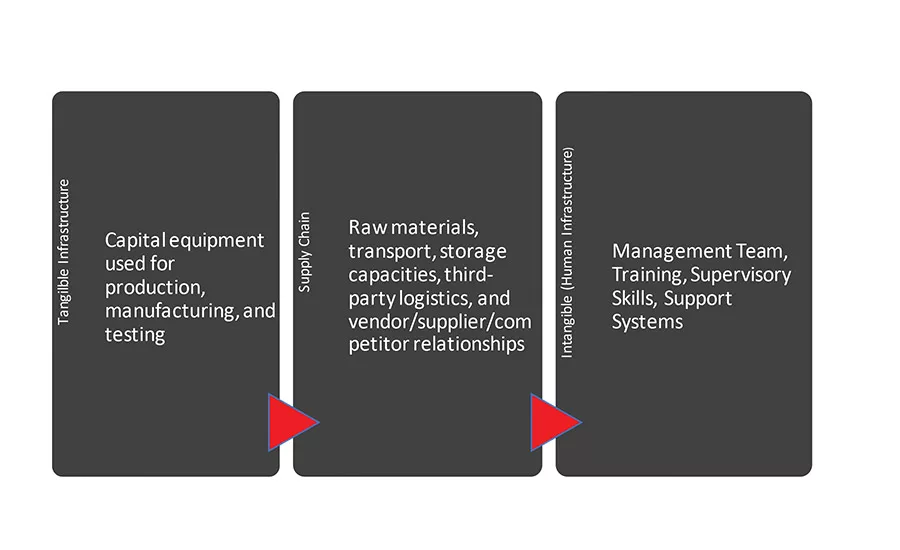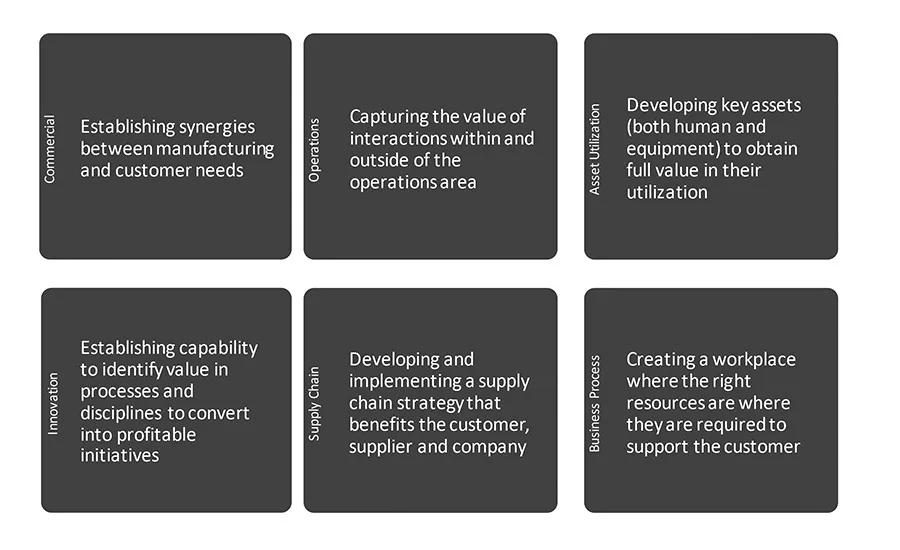Strategic Solutions
Corporate Planning: The Best Business Interruption Insurance
Successful companies go beyond mitigating risk to ensure sustainable growth.

Figure 1. Three-pronged approach to business continuity for a global manufacturer (core requirements).
(Source: The ChemQuest Group, Inc.)

Figure 2. Holistic and focused approach to business continuity planning.
(Source: The ChemQuest Group, Inc.)
While certainly no guarantee of success, a business strategy with robust crisis management increases not only the probability of survival but a faster return to a thriving business. In many cases, it also enables a business to uncover and correct its weaknesses.
Business continuity planning is ongoing and varies both in scope and structure from company to company, even in the same industry. It requires disciplined periodic reviews (and updates) by those in the C-suite to fully address major operational risk scenarios, even in the midst of unprecedented corporate success. To be effective, business continuity planning should be synced with daily operations and integral to the organization’s short- and long-term performance benchmarks.
Case in Point
A 25-year-old global manufacturer lacked confidence in its own sustained growth. Operationally, it had expanded distribution to over 50 countries, with the lion’s share of its business growth in Asia. However, the growing channel was served by one major U.S.-based plant and a smaller Japan-based manufacturing site. At issue was the fact that the majority of its premium products were perishable if not kept frozen and had a short shelf life of under two months, in some cases.
The initial objective was to investigate a manufacturing location strategically based in Asia. Due to the high cost of the products, the logistics related to shipping a majority of product from the U.S., the limitations of the existing site in Japan, and intellectual property (IP) considerations, Singapore was selected. A comprehensive plan was developed and executed to expand the manufacturer’s capabilities and sustainability initiatives, including its laboratories, supply chain, technical teams, and human resources.
At the outset, the global manufacturer’s business continuity gaps were identified. The material resources planning system (MRP) was inadequate, for example, and there was no MRP standard for multiple locations. To alleviate existing gaps and to ensure continuous improvement, the company implemented a three-pronged approach, as shown in Figure 1. For the next eight years, the approach exceeded expectations by yielding 10% annual growth in sales, improving margins, and strengthening customer relationships.
Tangible infrastructure, as previously defined, included the following recommendations:
- New manufacturing location established in Singapore
- Automation and standardization of manufacturing processes in the U.S. and Singapore, inclusive of supervisory control and data acquisition (SCADA)
- Enhanced process quality
- Enhanced QC analytical processes and equipment
- 5S lean systems for all locations
- Standardized technical support labs, including clean room environments
- Replication of products at different locations to ensure continuity of supply
- Consolidation of lab/office with enhanced capability in China
- Larger satellite warehouse distribution center and laboratory in the UK to support Europe
Recommendations for supply chain management were as follows:
- Supply chain department reporting to operations gained access to global suppliers
- Global raw material plan, inclusive of supply agreements and quarterly analysis of sustainable supply
- Global third-party logistics plans (3PL) to support both raw material and outbound shipments
- Enhanced and standardized shipping processes to ensure environmental requirements and customer requirements are met
- Standardized MRP at all locations
- Enhanced site storage capacity and standard conditions (e.g., temperature control)
- Identification and qualification of alternate raw materials to ensure continuity of supply
- Enhanced raw material efficiency, lowering costs and increasing profit margins
Finally, recommendations for the global manufacturer’s intangible (human infrastructure) approach included:
- Global ISO quality systems, with both manufacturing sites certified under a 2015 standard
- Global environmental standards
- Standard non-conformance corrective action standards (NCCA)
- Succession planning
- Enhanced training systems
- Global HR systems
- Management and supervisory training
Holistic Initiatives
In my experience, business continuity planning is a key component of a holistic, focused portfolio of initiatives that lead to manufacturing excellence by improving overall performance and achieving business goals. As depicted in Figure 2, the initiatives include commercial, operations, innovation, supply chain, asset utilization, and business process.
For the global manufacturer, a key consideration was adopting a new supply chain strategy to benefit and strengthen relationships among the channel customers, suppliers, and the company’s own internal departments. Asset utilization and the business process were equally and effectively prioritized over eight years.
How prepared is your company for disruption? As 2020 has taught even seasoned industry practitioners, don’t merely expect the unexpected—plan for it.
Looking for a reprint of this article?
From high-res PDFs to custom plaques, order your copy today!




